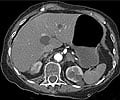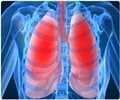Researchers have drawn attention to the increasing exposure to second-hand smoke among college students.
"It is well-known that there are some serious health issues surrounding secondhand smoke," said Dr Mark Wolfson, lead author on the study, professor and section head for the Section on Society and Health in the Department of Social Sciences and Health Policy."While some college campuses are smoke free, others have virtually no restrictions on smoking, not even in the residence halls.
"There is a growing national movement to move away from that, but it still very much varies by campus. In this first study to evaluate SHS exposure among college students, we were really kind of floored to see how many, and how frequently, students are exposed to it," he added.
During the study, the researchers surveyed 4,223 undergraduate college students of which 83 percent reported having been exposed to SHS at least once in the seven days preceding the survey.
The study showed that 65 percent of the exposure happened at a restaurant or bar, followed by 55pct exposure at home or in the same room and 38 percent in car.
Daily and occasional smokers were more likely than nonsmokers to report exposure, perhaps not surprising given that they are more likely than other students to have friends who smoke and to frequent or live in locations where smoking occurs, according to the study.
Advertisement
Other factors that appeared to be associated with increased exposure to SHS included living in residence locations where smoking is allowed or locations associated with smoking, such as Greek houses and off-campus housing, being female, of white race, having parents with higher education levels and attending a public versus private school.
Advertisement
"We were really shocked to see that 83 percent of students reported at least some exposure during the previous week," Wolfson said.
"That said, we don't know if the exposure was at a nuisance level or at a level that might influence health. Either way, knowing what we know about SHS, lowering the rates of smoking is definitely something we should be seriously looking at on college campuses," he added.
The authors suggest that colleges should consider looking at ways to take steps to reduce smoking and concomitant exposure to SHS among their students.
The findings appear in the journal Nicotine and Tobacco Research.
Source-ANI
TAN















